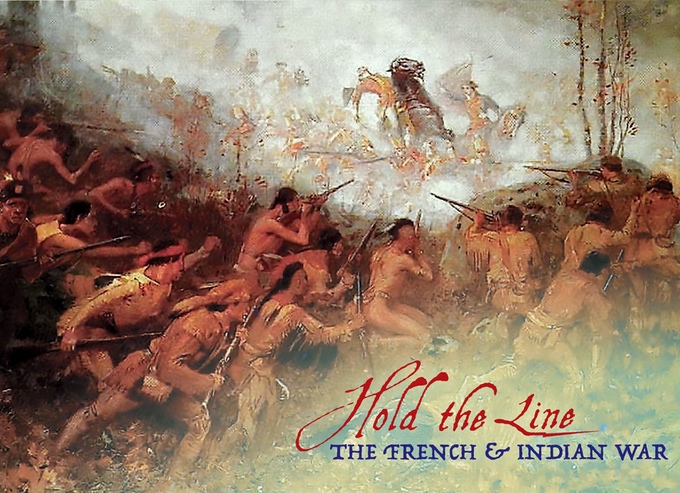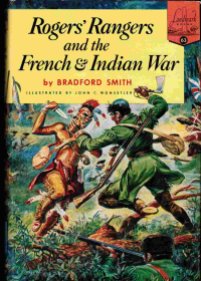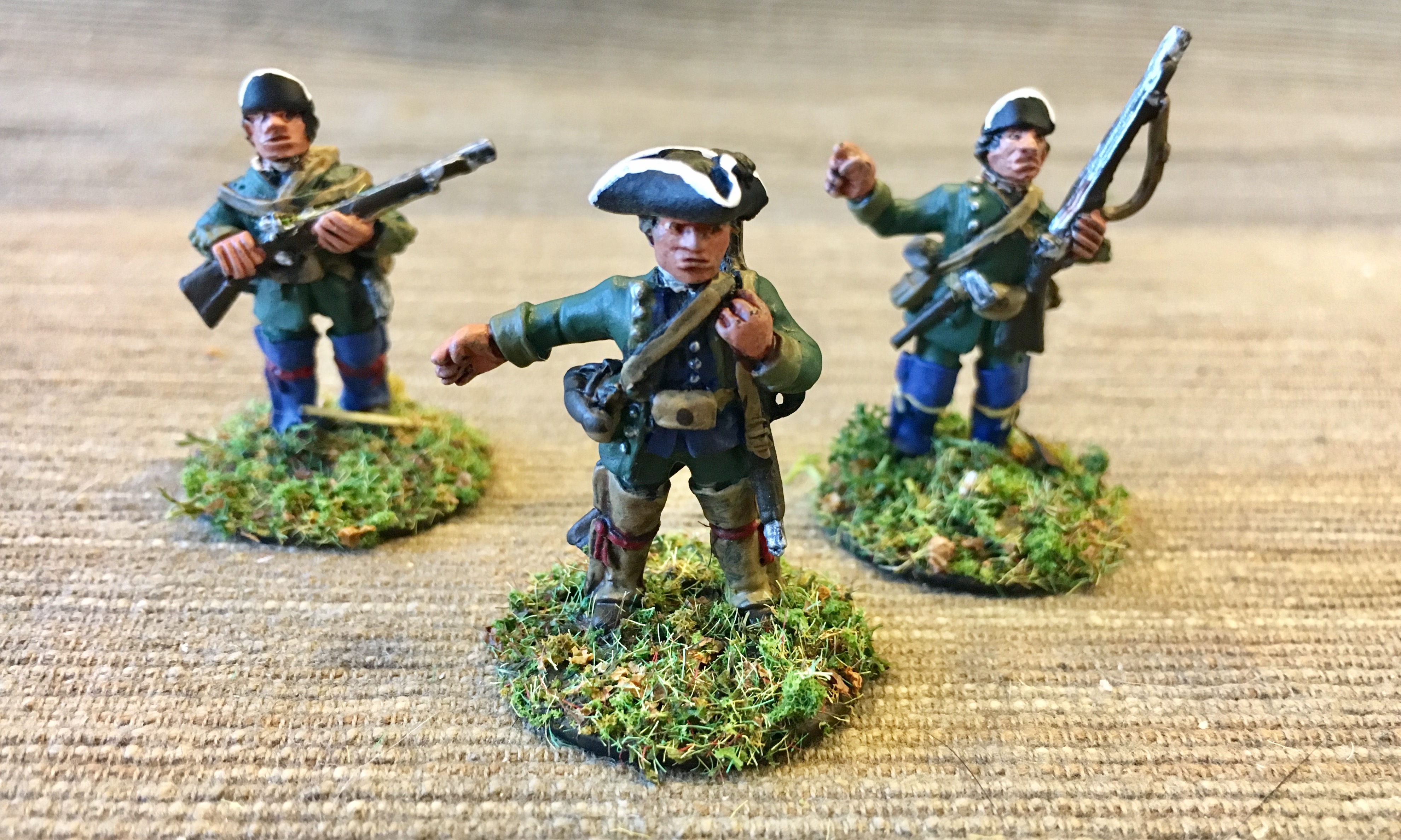
To understand the founding of the United States, you have to understand the American Revolution, and to understand the American Revolution, you need to understand the French and Indian War. As I’ve learned more about these wars in my adult life, I’m increasingly surprised the FIW gets such short shrift in American education and the general cultural conversations of the country’s history.

Major campaigns and battles of the French and Indian War, 1754-1763
As I’ve written about previously, I’ve spent a lot of time touring many sites where the French and British vied for control of the continent in the mid-18th-century. In that era the French held much of the country west and north of the Alleghenies while the British possessed the eastern regions of the coast. As an extension of the Seven Years War in Europe and around the globe, the French and British empires fought over territory in America during the FIW and pulled numerous native Indian tribes into complicated alliances along the way. The clash of cultures and motives among Europeans and native peoples carried ripple effects for years to come and old grudges from the period led directly to the American Revolution some two decades later.
 Some of my recent reading on the French and Indian War
Some of my recent reading on the French and Indian War
My time spent touring various sites around the company has been supplemented by a stack of books. Fred Anderson’s Crucible of War (2001) weighs in at over 900 pages and provides a super comprehensive treatment of the war in depth. The French and Indian War (2006) by Walter Borneman provides a similar overview with detail stripped way back into a more historical narrative. For a focus on how Indian peoples shaped the 18th-century European settlement and wars for the continent, Peter Silver’s Our Savage Neighbors (2007) gives some fantastic insights which are usually breezed over in most histories. Finally, I’ve recently picked up a copy of Braddock’s Defeat (2015) by David Preston. This book provides a great bridge story on how a key campaign on the western frontier of Pennsylvania in 1755 echoed through the events of the FIW into the American Revolution and history beyond.
With many miles traveled and pages read, getting to play boardgames of the FIW — both tactically and strategically — has provided me the opportunity to roll up my sleeves and experience the wilderness roads, forts, settlements and battlefields of this fascinating period.

Wilderness War (GMT Games)
My longtime favorite of FIW games is GMT’s Wilderness War from 2001. Designed by Volko Ruhnke, WW is not only the standout game of the period but also ranks among the best of modern wargames depicting any period. The game’s gorgeous hardbound game board defines the game as the war was fought amid the geography of the Northeast with point-to-point connections between major landmarks, cities, settlements and forts.

Sample strategy cards from GMT’s Wilderness War
Strategy cards featuring both abstracted military actions like recruiting troops and militia, building siege works or conducting campaigns and period-specific events and personalities drive the game. Alternatively cards are played for points to activate leaders, forces stacked with a leader or individual units. Points may also be spent to construct stockades and forts to defend against attack a provide a safe haven during wintering periods.

Wilderness War by GMT Games
For me, the three key strategies to WW are in defending the important interior frontier, remaining exceedingly mindful of troop positions as winter seasons approach and playing a long game of carefully-planned campaigns. All of these factors are incredibly well factored into a game which balances abstraction with historic events, all of which can be experienced with a solid few hours of play.

The French and Indian War (Decision Games)
For another grand strategic experience of the FIW, Strategy & Tactics magazine issue #231 from Nov/Dec 2005 by Decision Games offers up a full campaign level game with The French and Indian War. Traditional wargamers will feel right at home with this hefty game although it does offer some unique elements.

S&T’s FIW map and counters organized in tray
Right off the bat, experienced gamers will notice a departure with the game map laid out on a square grid instead of the more typical hex style. Past the square grid, the map itself is gorgeous with well-delineated terrain, clear colonial control boundaries and abstracted French and British home country holding areas across the Atlantic in Europe. Charts and tables for terrain effects, supply points, balance of power and colonial control displayed right around the board. The tiny cardboard playing chits likewise feature some simple and colorful art clearly differentiating units types and nationalities. In all, there’s a lot to love visually in this magazine game.
Gameplay goes a long way toward representing the build up of tensions and eventual outbreak of war between the French and British in North America. Yearly turns between 1758 and 1762 are split into four seasons each, and the results of battles occupation of cities and towns shifts the Balance of Power track which drives income, initiative, random events and negotiating strength. The relatively weak and poor British at the start of the game quickly gain strength as the Seven Years War breaks out and men, money and ships begin to arrive from Europe. For the French, they have to take some early victories and then hold key cities like Quebec through the late game. Victory in one of the three included scenarios is determined by a straight points system accumulated during the game largely by capturing cities and settlements.
Aside from the game rules themselves, the magazine holds over 20 pages of background on the FIW, major battles and quick bios on some of the conflict’s major personalities. This plus some nice maps and a short bibliography makes for a great package for those wanting a relatively comprehensive experience of the war. Being a magazine game, there are a couple discrepancies in the rules here and there, but the design and heft of the game is entirely satisfying.

Hold The Line: French and Indian War (Worthington Publishing)
The 2008 French and Indian War Expansion Set for the popular Hold The Line series by Worthington Publishing downshifts into a more tactical presentation of the war without sacrificing the flavor of the era.

Scenario set-up for the Battle of Snowshoes for the HTL FIW expansion
Adding to the HTL base game components, the FIW expansion comes with Indian, Ranger and French unit tiles to be played with using the British and Militia pieces in the original. Additional terrain hex tiles are included to represent lakes, boats forts and Indian villages, all of which played important roles in the wilderness battleground of the FIW. Five historic scenarios round out gameplay which will be any lover of the original HTL.

The 2016 remastered HTL French and Indian War game
The HTL series has been remastered in 2016 with a successfully funded recent Kickstarter campaign. The new version has some serious upgrades with plastic miniatures from the Plastic Soldier Company and redesigned board and tile artwork. For both the American Revolution and FIW sets there were a bunch of extra scenarios and options to buy add-on miniatures. The new game looks fantastic and breathes new life into an already immensely enjoyable game on the era of 18th-century American colonial conflict.

A Few Acres of Snow (Treefrog Games)
A Few Acres of Snow, designed by Martin Wallace and published in 2011 by Treefrog Games, is my other go-to game on the period. While not strictly a game confined to the FIW, AFAOS takes two players through the broader French-British colonial period in North America.
Playable in just over an hour, AFAOS is an area control deck-building game where British and French players draft cards into and out of their hands in order to move, settle, construct, skirmish and conduct sieges. Managing cards gives the game a campaign feel as several turns may be taken up getting all the right cards in place before executing a plan. The British player generally has more financial and naval strength while the French are much more agile and open to trade opportunities in the wilderness interior. Essentially, the game captures the overall character of the opposing forces and provides for a ton of strategic play within a simple, gorgeous design.

A recent game of A Few Acres of Snow by Treefrog Games
The major downside to AFAOS that many critics will bring up is a broken mechanic within the game where one side can all but sew up a victory through a specific series of opening moves. I’m not going to provide any details since players agreeing to play fairly and ignoring this one issue with an otherwise perfect and wildly popular game is how I choose to play the game. The look and flow of AFAOS makes it what I consider to be the best at introducing even inexperienced gamers to the period.

Struggle For New France (Schutze Games)
I picked up a copy of 2013’s Struggle For New France designed by Bill Molyneaux and published by Schutze Games in a charity auction at HMGS Fall In! 2015. It’s a super simple beginner’s game playable in about 90 minutes with event cards and point to point movement. With just a few pages of rules, including a solo game option, SFNF is a lean game designed for swift play while still reflecting the basic character of the war.

Set-up for a play through Struggle For New France by Schutze Games
The relatively inexpensive game has a compact yet beautiful 11″ x 17″ color map, over 60 cards and over 175 small printed wooden tiles. Play is quick with a hand of five cards for each player, of which one can be played per season. In a season, both sides move and battle using standardized movement for regulars and Indians plus bonuses for having a leader stacked with a force. Forts, fortresses and Indian villages give defensive modifiers in battle along with leaders present and any cards added to the battle modifiers. Areas won or lost provide victory points, all tracked on either side of the map. After four seasons of play, cards are refreshed and the next turn year begins. Playing from the entire course of the war, British win at 50 points and taking Quebec, Montreal and Louisburg, and the French win with 45 points. While by no means as rich an experience as the offerings from GMT and Decision Games, SFNF achieves a remarkable amount in strategic experience of the FIW.

French & Indian War Battle Collection (Two Buck Games)
Another charity auction win at Fall In last year was 2014’s French & Indian War Battle Collection by Two Buck Games. The game makes a nice companion to SFNF and is also designed by Molyneaux. Like SFNF, this is an easy game but with a pack of twelve major battles and engagements of the war instead of a grand campaign style of play. Each scenario is playable in anywhere from well under an hour to maybe two hours maximum. While not big on design, the game does allow a player to get down to the tactical level in some very small engagements including some personal favorites like Jumonville Glen, Fort Necessity and the Mary Jeminson Raid.

The Fort Necessity scenario from The French & Indian War Battle Collection
A brief set of rules is supplemented with specific scenario outlines for set-up and play. Maps for each scenario are printed front and back on card stock, and 88 counters come with generic information to make for flexible use representing a variety of regular and irregular French, British and Indian units at each battle or skirmish. As this is a tactical game, units move just one hex and may only by stacked alone or with an officer. Leaders die easily in combat, Indians are dangerously flexible on the attack and terrain can play a big role in a game’s outcome. All these factors make planning an attack or defense finicky down at the ground level and FIBWBC goes a long way toward mimicking the feel of up-close engagements during the period.

Empires In America (Victory Point Games)
My latest addition to my FIW games is the recent second edition reprint of Empires In America from the States of Siege series by Victory Point Games. This one stands apart from the others here as a purely solo game with the player’s French and Indian allies pitted against the game’s British and their allied Indian forces.

My first try at the re-issue of Empires In America by Victory Point Games
It took me a few times to get a handle on the single player flow of the game and I was beaten by the non-player AI in my first two games. Having played through it about a half dozen times now, I’ve finally got the hang of it with quick play and a fairly rich experience. Leaders wind up being key in winning the game much as leadership could make the difference during battles during the war.

Photo from my visit to Fort Necessity in the summer of 2014
So where to start with the French and Indian War?
The 21st-century has already given us a bunch of fantastic games to take us back to the forest, rivers and battles of the French and Indian War of some 260 years ago. Despite having a half-dozen of the recent FIW games under my belt, there area always more games to play. Wilderness Empires, also by Worthington Publishing, puts the war in a block game format with beautifully-illustrated event cards and game board. Columbia Games re-released its 1972 classic block game of Quebec 1759 in 2009, and the game still stands as probably the best way to experience this pivotal siege of the war.
For me, Wilderness War sits at the top of the list for its design and depth, not only for the FIW but among all the games I play. A Few Acres of Snow, Empires In America and Hold The Line likewise win big design points for me, and their speed of play sacrifices nothing in telling the story of the period. A gamer wishing to get into the FIW with a couple very different yet always rewarding gaming sessions could hardly do better by starting with these games.







/pic4762227.jpg)































































 Some of my recent reading on the French and Indian War
Some of my recent reading on the French and Indian War















